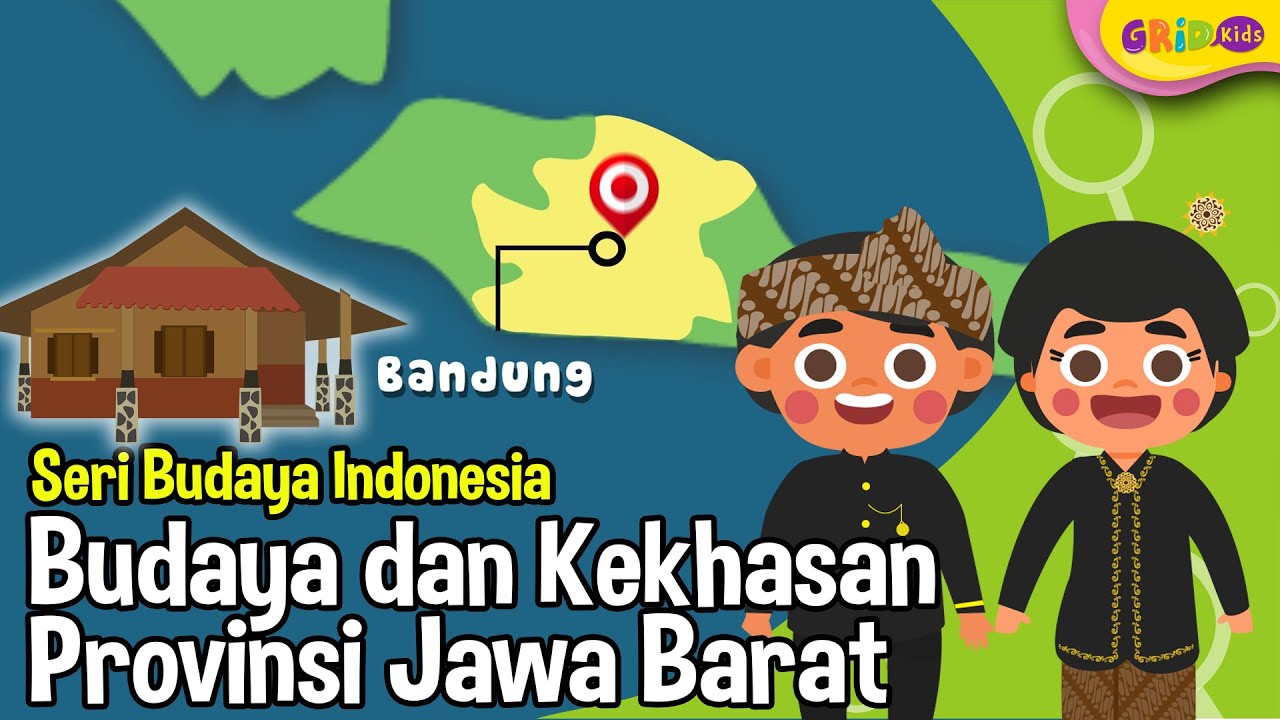SUKU SUNDA - VIDEO EXPLAINER
Summary
TLDRThe video discusses the Sundanese people, the second largest ethnic group in Indonesia, residing mostly in West Java, Banten, and Jakarta. It explores their culture, including their language, which has over 42 million speakers, and various regional dialects. The video highlights the art forms like Jaipong dance, Wayang Golek puppetry, and traditional music, as well as the Sunda people's architectural heritage and cuisine. The history of the Sundanese script, used since the 14th century, is also mentioned. The video aims to provide an insightful look into the rich cultural legacy of the Sundanese community.
Takeaways
- 😀 The Sundanese are the second-largest ethnic group in Indonesia, primarily living in West Java, Banten, and Jakarta.
- 😀 The Sundanese people make up at least 15.2% of Indonesia's total population.
- 😀 The name 'Sunda' was first used by King Purnawarman in 397 AD to refer to the capital of the Tarumanegara Kingdom.
- 😀 The Sundanese language belongs to the Malay-Polynesian branch and is spoken by at least 42 million people.
- 😀 Sundanese is the second most widely spoken language in Indonesia after Javanese.
- 😀 There are several dialects in the Sundanese language, including those in Banten, North Java, South Java, and Central Java.
- 😀 The Sundanese are known for their rich cultural traditions, including unique forms of dance like Jaipong, Merak, and Topeng.
- 😀 Wayang Golek, a type of puppet theatre, is a significant part of Sundanese arts, where the puppets are made of wood and operated by a storyteller (dalang).
- 😀 Sundanese music includes distinctive songs performed by a singer (Sinden) and traditional instruments such as Calung and Angklung.
- 😀 Traditional Sundanese houses have various styles, such as 'Imah Julang Ngapak' and those with simple rooftops, often found in cultural heritage sites and villages.
- 😀 Sundanese cuisine features dishes like Sayur Asem, Sayur Lodeh, Pepes, and Laladan, which are well-known across Indonesia.
- 😀 The Sundanese script, known as 'Aksara Ngalagena,' has been used since the 14th century and is an important cultural heritage.
Q & A
What is the population percentage of the Sundanese ethnic group in Indonesia?
-The Sundanese make up at least 15.2% of Indonesia's total population.
In which regions of Indonesia is the Sundanese population primarily concentrated?
-The Sundanese people are mainly concentrated in West Java, Banten, and Jakarta.
Who was the first to use the term 'Sunda' and in what year?
-The term 'Sunda' was first used by King Purnawarman in 397 AD to name the capital of the Tarumanegara Kingdom.
What is the main language spoken by the Sundanese people?
-The primary language spoken by the Sundanese people is the Sundanese language, which belongs to the Malay-Polynesian language branch.
How many people speak the Sundanese language and where is it spoken?
-The Sundanese language is spoken by at least 42 million people, mainly in West Java, Banten, and parts of Central Java, as well as in urban areas like Jakarta.
What are some of the main dialects of the Sundanese language?
-The main Sundanese dialects include the Banten Dialect, Northern Dialect, Southern Dialect, Cirebon Dialect, Eastern Central Dialect, and Southeastern Dialect.
What are some of the traditional dance forms of the Sundanese people?
-Traditional Sundanese dance forms include Jaipong, Merak, and Topeng dances.
What are some famous Sundanese musical instruments?
-Popular Sundanese musical instruments include Calung and Angklung.
What is the significance of the Sundanese writing system?
-The Sundanese writing system, known as Aksara Sunda, dates back to the 14th century and is a valuable cultural heritage. It is found in historical inscriptions like the Kawali and Astana Gede Prasasti.
Can you name some traditional Sundanese dishes?
-Traditional Sundanese dishes include Sayur Asem, Pepes, and Lodeh, which reflect the agricultural culture of the region.
Outlines

This section is available to paid users only. Please upgrade to access this part.
Upgrade NowMindmap

This section is available to paid users only. Please upgrade to access this part.
Upgrade NowKeywords

This section is available to paid users only. Please upgrade to access this part.
Upgrade NowHighlights

This section is available to paid users only. Please upgrade to access this part.
Upgrade NowTranscripts

This section is available to paid users only. Please upgrade to access this part.
Upgrade NowBrowse More Related Video

Budaya Sunda || 5 Budaya Sunda Yang Mengguncang Dunia

Sejarah Singkat Asal Usul Suku Sunda _ Penduduk Pertama di Nusantara

Sejarah Singkat Asal Usul Suku Sunda _ Penduduk Pertama di Nusantara

MENGENAL PROVINSI BANTEN || KONDISI GEOGRAFIS, SOSIAL BUDAYA, POTENSI SDA (2020)

Daftar 10 Suku Terbesar di Indonesia

Budaya dan Kekhasan Provinsi Jawa Barat - Seri Budaya Indonesia
5.0 / 5 (0 votes)